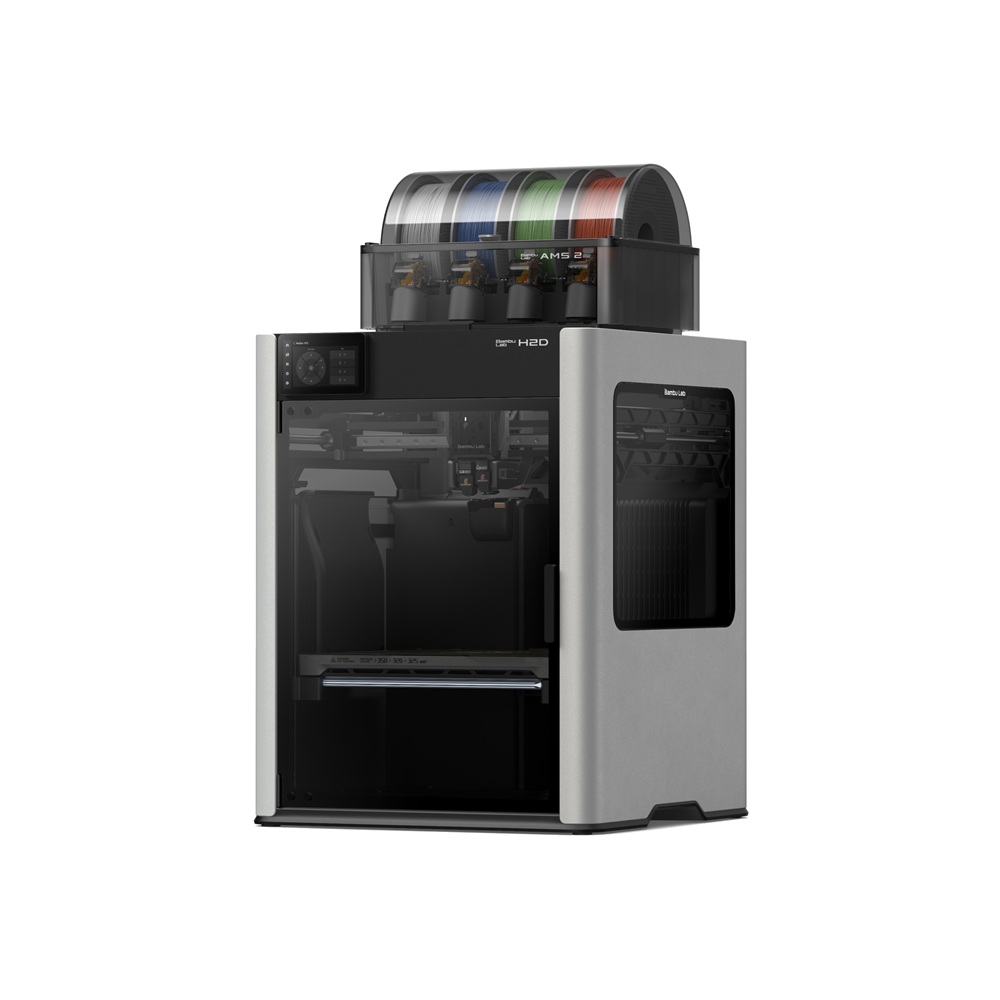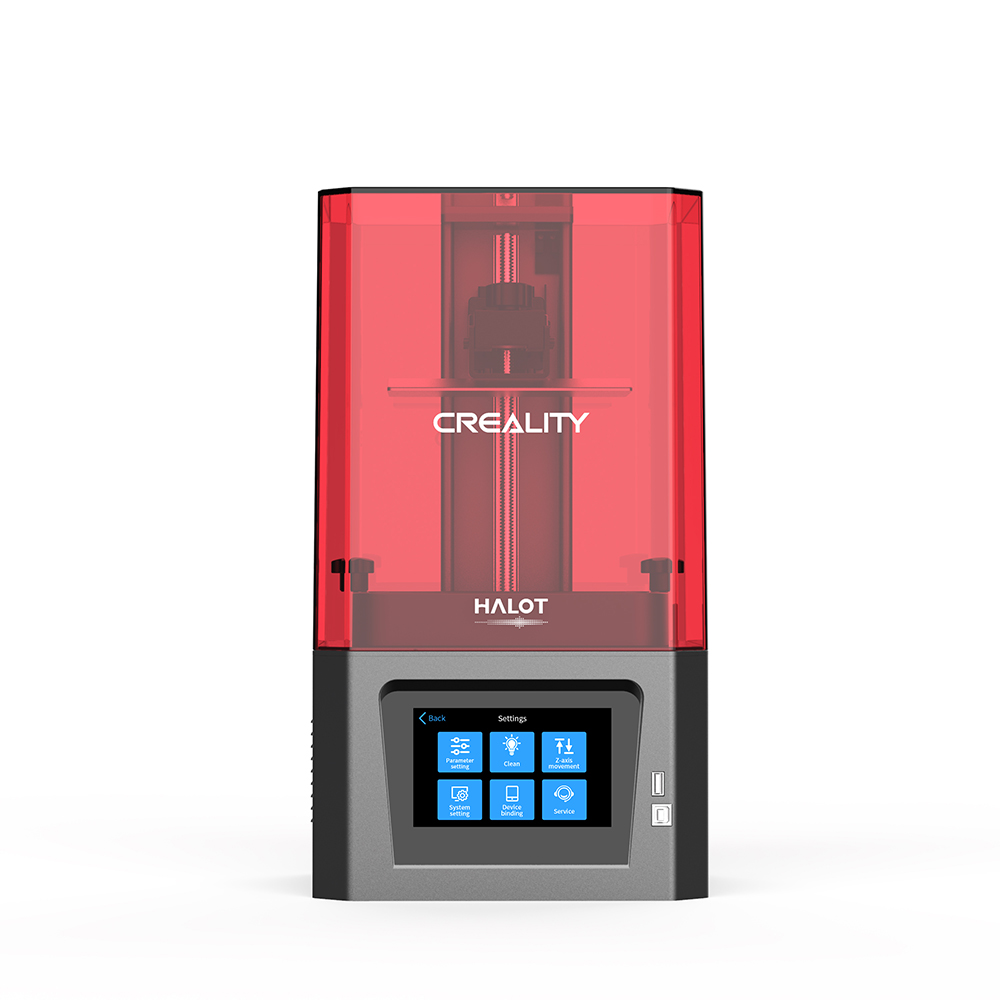Compare H2D vs Halot One
Comparison between the best 3D printers
Choose the best 3D printer at the best price. The cheapest 3D printers are here.
Buy a 3D printer here with 3D Fila.
 |
 |
|
| Model | H2D |
Halot One |
| Printing Material | Filament | Resin |
| Buy Filament for Bambu Lab H2D | Buy Resin forCreality 3D Halot One | |
| Estimated price | $1899,00 | $250,00 |
| Manufacturer | Bambu Lab | Creality 3D |
| Release Year | 2025 | 2021 |
| Print Volume [mm] | 350x320x325 | 127x80x160 |
| Printer Size [mm] | 492x514x626 | 221x221x404 |
| Weight [kg] | 42,3 | 7,1 |
| Power Loss Recovery | YES | NO |
| Maximum Resolution [mm] | 0,01 | 2k |
| Processor | ||
| Display | Touchscreen 5'' | |
| Power Supply | ||
| Connectivity | Wifi, Bambu bus, Cartão SD | |
| Operating systems | Windows, Mac, Linux | Windows, Mac, Linux |
| Date of registration in the system | 2025-03-31 | 2022-10-11 |
| Release date | 2025 | 2021 |
| Extra features | Bambu Labs H2D combines high-speed 3D printing with a chamber heated up to 65 °C, dual extrusion with automatic nozzle switching, an AMS for filament drying and exchange, and AI sensors that detect failures. It offers optional laser and digital cutting capabilities, features intelligent calibration through computer vision, vibration control, enhanced fire safety, and real-time camera monitoring. | Crealitys Halot-One printer stands out with several innovative features. It has a high-resolution touchscreen, providing an intuitive and responsive interface. Its quiet printing capability is remarkable, ideal for environments where noise is a concern. Assembly and setup are simple, with automatic functions facilitating quick start. Among its features, remote monitoring and adjustments via the Creality Cloud app stand out, simplifying remote print management. Replacing the FEP in the resin vat is easy, and the printer even includes extra FEP sheets. Top cover removal detection increases safety by automatically pausing printing. In addition, its integral light source promises high uniformity, optimizing print quality. |
| Support for multiple colors and materials (AMS and CFS) | YES | NO |
Notes * |
||
| Cost-benefit | 7 / 10 | 8 / 10 |
| Hardware | 8 / 10 | 0.6 / 10 |
| Tela | . | . |
| Print volume | 4 / 10 | 3 / 10 |
| Performance | 5 / 10 | 9 / 10 |
Conclusion |
| In comparing the Bambu Lab H2D and the Creality 3D Halot One, several key factors emerge that highlight the strengths and considerations of each printer for potential buyers. The Bambu Lab H2D, while significantly more expensive, offers advanced capabilities that target professional and serious hobbyist users. With a larger print volume, high-resolution output, and a suite of features designed for efficiency and reliability—including power loss recovery and support for multiple colors and materials—it presents a compelling choice for users focused on quality and versatility in their 3D printing needs. Its various high-tech features, such as AI sensor technology for failure detection and real-time monitoring, further enhance its appeal for complex projects. Conversely, the Creality 3D Halot One is budget-friendly and more accessible, making it an excellent option for beginners or casual users. Its compact size and ease of assembly cater to those new to 3D printing. Despite the limitations in print volume and resolution compared to the H2D, it excels in usability and practicality, featuring quiet operation and a user-friendly interface. Additionally, its cost-effectiveness and solid performance in basic tasks earn it a strong cost-benefit rating. Ultimately, the choice between these two printers hinges on the user's specific needs and budget. For those seeking high-end performance and advanced features, the H2D is a worthwhile investment. Meanwhile, the Halot One represents an excellent entry point into 3D printing, providing substantial value for those looking to explore without a considerable financial commitment. |

